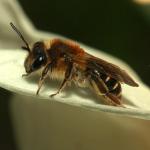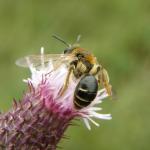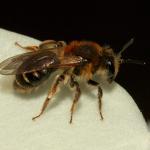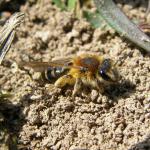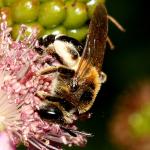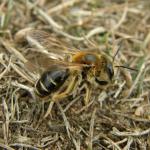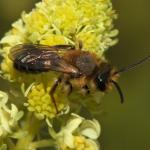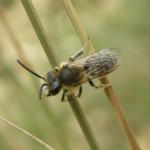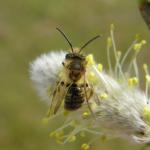A very smart-looking bee when freshly emerged, with bright foxy hairs on the thorax and a shining black abdomen with thin lines of white hairs on the apices of the segments. The males rapidly become very faded. A good character to separate the females is the form of the hind tibia which is widest at the apex, unlike the rest of the bees with this general appearance. When I first became interested in the aculeates in the 1970s this was a fairly scarce bee, but since then it has become one of the commonest andrenid bees, at least in the southern half of England.
This species is found throughout the southern half of England. Absent from Ireland but occurring on several of the Channel Islands.
It is widespread in Southern and Central Europe.
This species is not regarded as scarce or threatened.
There appear to be no habitat restrictions for this species. Although there is a strong suggestion of a temperature restriction, possibly related to the need to complete two generations in a year.
Bivoltine; March to May, and July to August.
This species nests singly in short swards, and on patches of bare ground.
A range of flowers are visited for nectar.
No parasites are confirmed for this species.
2019



